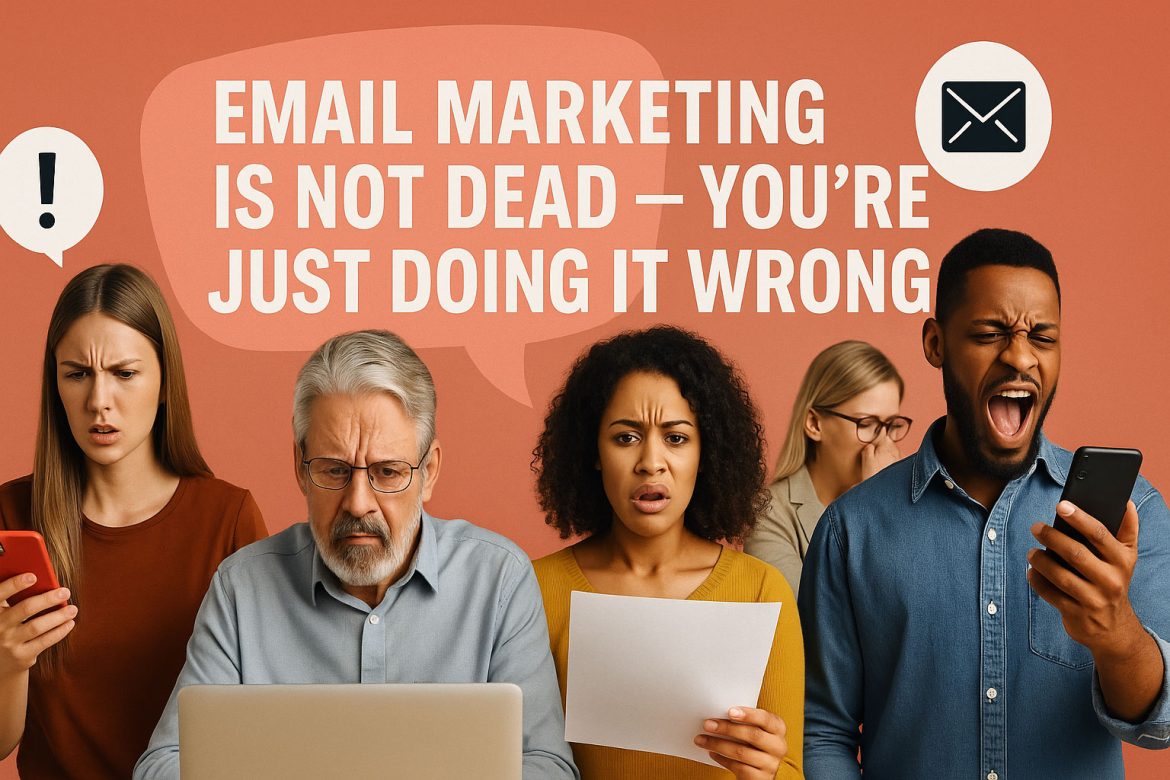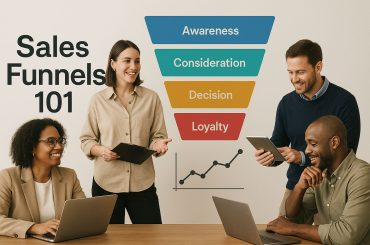I. The Myth of the Obituary
In marketing circles, few topics have been declared “dead” as frequently—or as inaccurately—as email marketing. It’s a common refrain at conferences, in social feeds, and even among startup founders pitching the next big thing:
“Nobody reads emails anymore.”
“Open rates are meaningless.”
“Email is spam in a nicer suit.”
And yet, email remains one of the most consistently high-performing marketing channels across industries. According to Statista, global email users surpassed 4.4 billion in 2024. And according to Campaign Monitor, the average return on investment (ROI) from email sits at $36 for every $1 spent.
So what gives?
The issue isn’t with email itself. It’s with how it’s used. Email isn’t dead—it’s just being executed with outdated tactics, irrelevant content, and poor timing.
In this essay, we’ll examine the common causes of failure in email marketing, then walk through the anatomy of a high-performing email strategy, section by section. Think of this not as a cheerleader pitch, but as a post-mortem turned revival plan.
II. Why Most Email Marketing Fails
Before we rebuild, we need to dismantle the common mistakes brands make.
1. You’re Broadcasting, Not Conversing
Too many brands treat email as a one-way loudspeaker. They send “newsletters” with no segmentation, no personalization, and no context.
If your subject line reads like a press release, don’t be surprised when it lands in the trash.
2. Your Timing Is Transactional
If the only emails you send are promotions, discounts, or “buy now” pleas, you’ve trained your audience to ignore you.
Email should nurture. It should educate, entertain, and inspire before it asks for anything.
3. Your List Hygiene Is Nonexistent
Are you sending to people who haven’t opened an email in 18 months? Are you regularly cleaning your list?
Low engagement → low deliverability → spam folder.
4. Your Copy Sounds Like Everyone Else
Open your inbox. Count how many subject lines say:
- “Last chance!”
- “You don’t want to miss this!”
- “Biggest sale ever!”
Generic language = generic results. Voice matters more than ever.
III. Reframing Email as a Relationship Channel
Email is not a notification system. It’s a relationship channel—arguably the most intimate one in digital marketing. Unlike social media, where algorithms filter visibility, email lands directly in someone’s private inbox. That’s a privilege.
If we reframe email as an ongoing conversation—rather than a transaction—the strategy becomes clear:
Provide repeated, personalized, high-context value that builds trust over time.
Let’s now break this down into a system.
IV. The 7-Element Framework of Effective Email Marketing
1. Segmentation: Speak to One Person, Not Everyone
Every subscriber is at a different stage in their relationship with your brand. Your job is to match content to their context.
Segmentation Ideas:
- New subscriber vs. repeat buyer
- Interests based on past clicks
- Geography or time zone
- Referral source (e.g., came from TikTok vs. organic search)
Tooling Tip:
Use ESPs like Klaviyo or ConvertKit to auto-tag and segment based on behavior—not just sign-up form responses.
2. Personalization: Beyond “Hi, [First Name]”
True personalization means referencing behavior, preferences, and context.
Examples:
- “We saw you liked our content on remote work—here’s a new guide we just released.”
- “It’s been 30 days since your last purchase—want to try something new?”
Personalization is about relevance, not flattery.
3. Storytelling: Make the Reader the Hero
People don’t connect with features. They connect with transformation.
Instead of saying:
“Our new skincare formula includes Vitamin C…”
Say:
“Emma’s acne cleared in 8 weeks without switching routines. Here’s what made the difference.”
Use case studies, founder stories, behind-the-scenes breakdowns—anything that adds narrative weight.
4. Value-First Sequences: Don’t Sell Until You’ve Served
Here’s what a high-converting welcome sequence might look like:
- Email 1: Thank you + quick value download (e.g., guide, template, checklist)
- Email 2: Educational tip or behind-the-brand story
- Email 3: A win from someone like them (social proof)
- Email 4: Offer with soft CTA
- Email 5: Reminder with urgency + bonus value
Each email earns the right to make a request.
5. Design for Readability, Not Novelty
Avoid design-heavy templates unless your audience expects them. Why?
- HTML-heavy emails can trigger spam filters
- Complex layouts don’t render well across all devices
- Text-based emails feel more personal
Use whitespace, bolding, and short paragraphs. Write like a human. Use formatting like a copywriter.
6. Consistency Beats Campaigns
Don’t rely on “big splash” seasonal emails. Build routine.
Ideal cadences:
- 1x/week for educational or community-driven brands
- 2–3x/month for product-heavy or B2B companies
- Daily or multi-week for time-limited launches or challenges
Consistency builds anticipation and familiarity. It also improves deliverability over time.
7. Measurement That Goes Beyond Opens
Open rates are increasingly unreliable with Apple’s Mail Privacy Protection (MPP). Focus on:
- Click-through rates (CTR)
- Reply rates (especially in welcome sequences)
- Conversions (via UTM tracking or post-purchase source attribution)
- Email-sourced revenue (especially important for e-commerce)
If you’re seeing opens but not clicks, the subject line is overperforming compared to the content. Fix the disconnect.
V. Bonus: Tactics That Still Work in 2025
- “Reply to this email” micro-engagements (great for deliverability)
- Smart resends (e.g., resend to non-openers with new subject line 48 hours later)
- Preview text optimization—the silent conversion booster
- Post-purchase automation (reviews, referral asks, product tips)
- Dynamic content blocks (show different messages to different segments in the same email)
VI. Real-World Email Success Patterns
Let’s examine two real cases:
A. The Thought Leader Funnel (B2B Consultant)
- Sends a value-packed weekly newsletter with a consistent structure (insight, example, resource)
- Uses storytelling to unpack a lesson from real client work
- Regularly earns replies like, “This is exactly what I needed today.”
Results: 48% average open rate, 7% click rate, steady pipeline growth without paid ads
B. The Boutique Skincare Brand
- Welcome flow = education > ingredient trust > customer story > offer
- Post-purchase flow = skincare routine guidance > upsell offer > review request
- Sends 1 story-based campaign per week + 1 product promo every 3 weeks
Results: $16 average revenue per subscriber, 30% repeat customer rate
VII. Conclusion: Resurrecting the ROI of Email
Email marketing is not dying—it’s evolving. And those who adapt to this evolution will be rewarded with deeper trust, higher conversions, and resilient direct audience ownership.
If your email strategy isn’t working, don’t blame the channel. Audit the content. Segment the audience. Rethink the cadence. Rewrite the tone.
Because when you treat email like a relationship—not a billboard—it becomes your most powerful digital asset.
Still think email is dead?
Then your competitors thank you in advance—for the attention you didn’t know how to keep.




